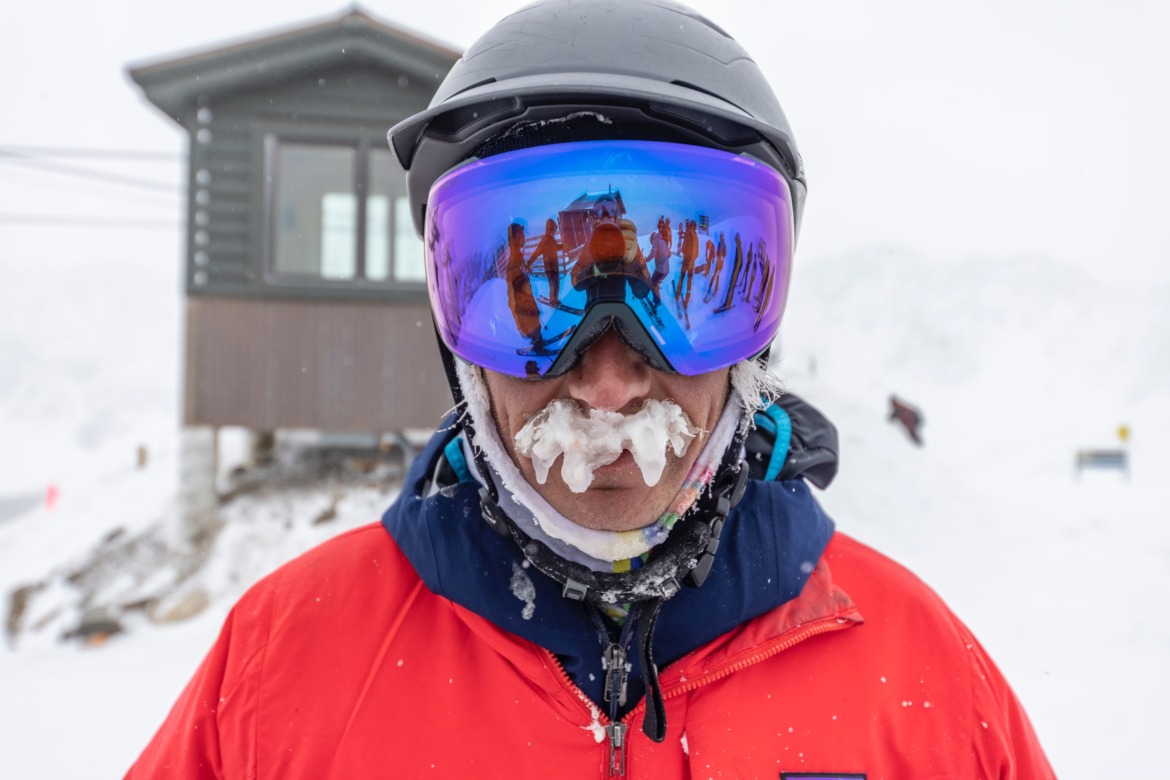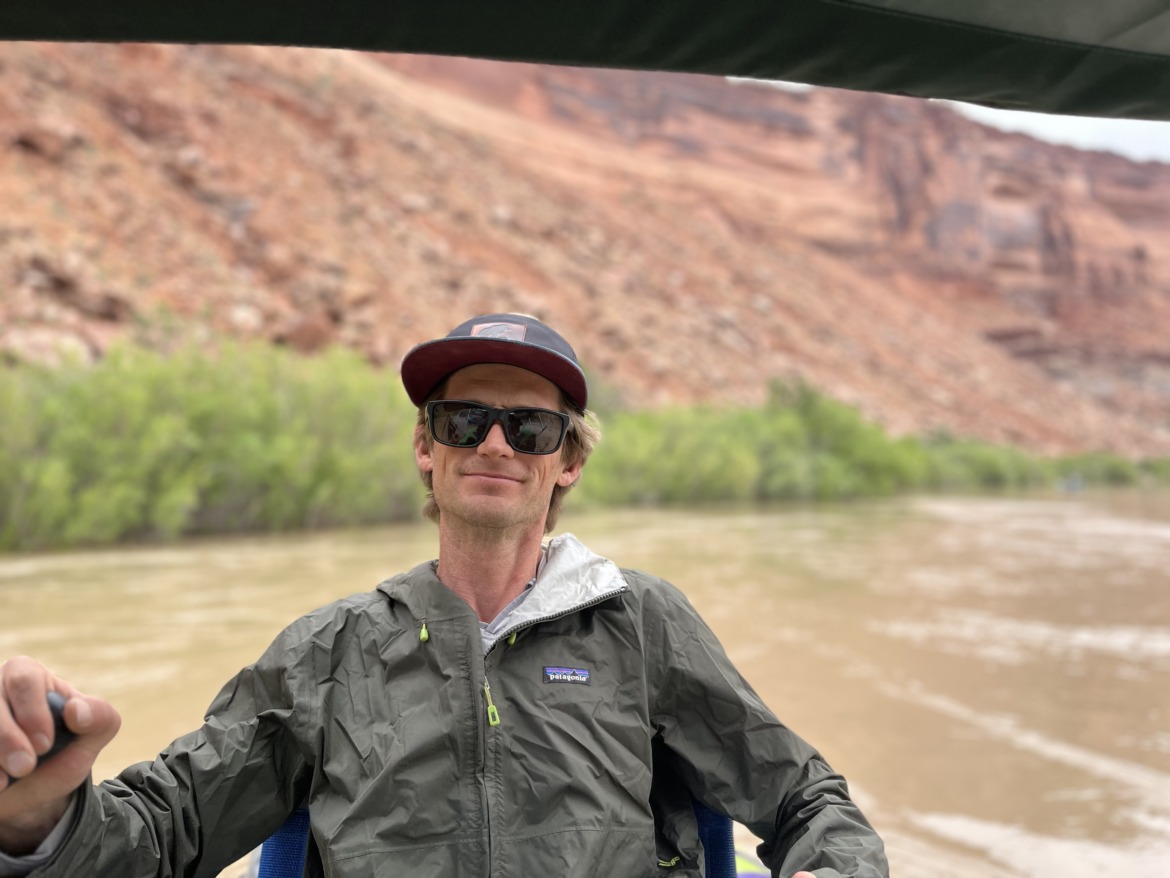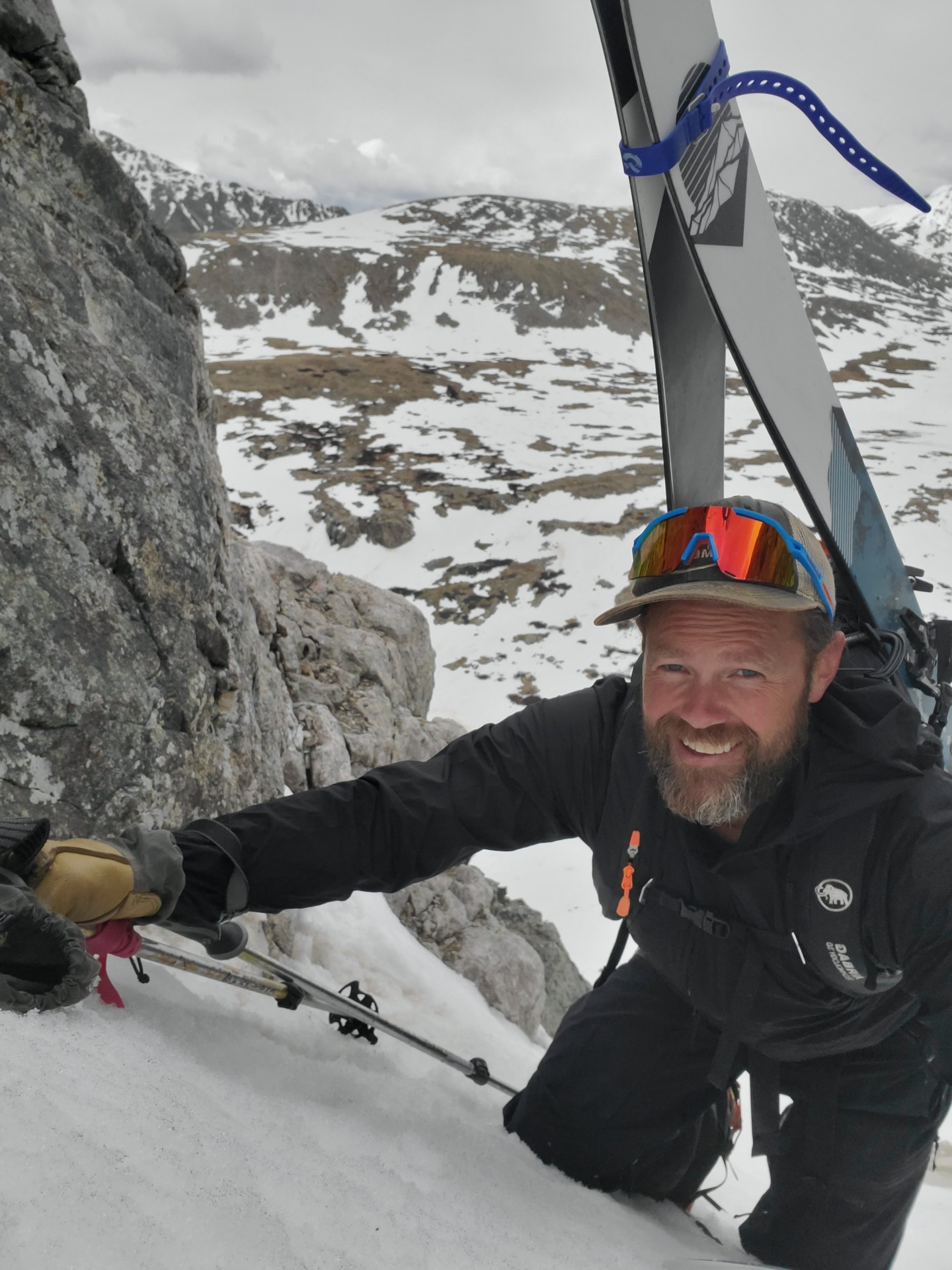
Andrew McWilliams is a former Avalanche Technician at Arapahoe Basin Ski Area and is the current Colorado Avalanche Information Center forecaster for the Northern Mountains which includes the Gore Range and all of Colorado North of I-70. Before that, he spent 10 seasons as a ski patroller, mostly at A-Basin plus a season at Breckenridge Ski Resort and has even done “summer” patrolling at The Remarkables in New Zealand.
WS: You were a patroller and then Lead Avalanche Technician at Arapahoe Basin Ski Area before joining CAIC. You probably got to toss some explosives. What did the avalanche mitigation work look like for you at The Basin?
AM: It was a great, albeit physically demanding, job. You work closely with a small team within the patrol to determine and manage the avalanche hazard within the ski area. You also work closely with the rest of the patrol and grooming staff to open the most terrain as efficiently and safely as possible. Putting this puzzle together each year was a fun challenge. Providing a quality, safe skiing experience for the public is what the job is all about.
The job was truly an exercise in logistics more than anything else. What slopes need attention and where? What type and size of explosive? How many shots and where should they be deployed? How many patrollers can you use for mitigation? What time do you start? And so on. Yes, you use lots of explosives, but you also do lots of ski-packing, ski-cutting, and compaction rolling. Depth hoar and basal facets are always a concern at the Basin. By affecting the snow in start zones early, often, and with a variety of methods, you limit the potential for avalanches to occur and grow large.
It’s a blessing and a curse, but at the Basin, there are rarely storms big enough to reactivate instabilities near the ground. So once slopes are open to the public, you’re generally just managing new snow instabilities. The skiing public does a lot of work for us as well by thoroughly tracking out any new snow. Since the Basin stays open into the summer most years, you forecast for wet snow avalanches too.
WS: How does your current work forecasting avalanche conditions instead of mitigating them contrast with your time in-bounds? How do those experiences help you with forecasting?
It’s very different. At a ski area, you learn every detail about the terrain in your operation. You get to spend years learning how different weather patterns and storms affect the terrain and what that means for avalanche conditions. You have a level of intimacy that isn’t possible when you’re working on a regional scale.
That being said, avalanche mitigation at a resort teaches you a lot about how to read the snow. You develop an intuition about where trigger points are on a slope and what kind of weather factors can combine to create unstable conditions. The best part of being a mitigator is always getting to test your assumptions. That kind of direct feedback is invaluable when you’re trying to learn about snow and avalanches.

WS: What are the hardest decisions you have to make in creating public forecasts?
Dropping the danger. It’s easy to say that avalanche conditions are dangerous or that the danger is increasing. There are many tools at our disposal, like snowpack tests and high-resolution weather models, to say that the snowpack is unstable or that a big storm is on the way. Dropping the danger, especially to LOW, is difficult because you are often making that decision based on an absence of information. For instance, because people aren’t reporting avalanches. There are no storms on the way. Snowpit tests are not showing results. As soon as you drop the danger to LOW, people will increase their exposure. As a patroller, I verified my forecasts with explosives, but that’s not possible for backcountry forecasting.
WS: What’s something about avalanche safety that you wish the public in general had a better understanding of?
Traveling in the backcountry is a “wicked learning environment,” meaning it gives you inconsistent and often incorrect feedback about your decisions. You can get away with skiing a line that could have produced a dangerous avalanche. But because it didn’t avalanche, you think you made a good choice. This can lead to more bad decisions that can eventually lead to disastrous outcomes.
WS: What’s something simple about traveling in avalanche terrain that people overthink?
How to recognize and avoid avalanche terrain. If the snow is the problem, the terrain is the solution. You can have lots of fun skiing in non-avalanche terrain; 30-degree slopes are steeper than you think. You don’t have to push the boundaries of safety to enjoy backcountry recreation. You just need to be able to read a map to make a plan. Once you’re in the field, confirm your assumptions while you look at the actual terrain in front of you and choose the right places – slopes below the 30-degree mark without steep slopes overhead or terrain traps below. Once you get the hang of it, it becomes like second nature.
WS: The forecast gives us information about the snowpack and the problems, but we have to apply that to terrain and make decisions about where, when, and how we recreate. Any tips or tools for folks who want to do that better?
Being able to recognize safe terrain to recreate on is so important. Terrain selection is one of the few things we can control in the backcountry. Slope angle plays such a big part in whether or not a slope is avalanche terrain, and humans are notoriously bad at measuring slope angles even with good tools, so it’s important to practice. I carry an inclinometer in my pocket and will measure slopes and ask my partners to guess the angle. It’s a fun way to develop an intuition about slope steepness and compete with your friends simultaneously. Try to go out with more experienced people and watch how they approach terrain. Ask them pointed questions. Just because someone has experience, doesn’t mean they make good decisions all the time. Fostering an environment where we can question each other and have a discussion about our choices is vital.
Another thing I recommend is to read the avalanche forecast and the weather daily. Reading these forecasts day in and day out will help you learn about the ebbs and flows of avalanche conditions. Avalanche forecasts are meant to be easy to understand and give you actionable advice, but they are filled with nuance. Read the discussion too. This is where you’ll get an in-depth explanation of current conditions which can help you make connections about why conditions are the way they are and then make better decisions yourself.

WS: What’s your favorite time, place, and conditions to be backcountry skiing for fun?
Anywhere there is good snow on a supportable base above a fun slope. But, to be more specific, my birthday is in April, and on a few occasions I’ve been able to combine good snow, good terrain, good friends, and good weather all on my birthday – that’s my favorite.

Justin Park is the Editor of Wild Snow. In 2009 while living in Hawaii, he got invited on a hut trip in Colorado. He had no backcountry gear, found Wild Snow, read up on backcountry skiing and bought some frame bindings for a pair of G3 Reverends so he didn’t have to buy touring boots. He moved to Breckenridge, CO a year later and today he skis 100+ days a year, most of them backcountry.
